

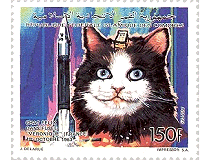
 |

|
 |
| Soviet rocket
specialist Sergei Korolev and biomedic Vladimir Yazdovsky used mice, rats
and rabbits in their initial flight tests but eventually settled on the
use of small female dogs as they were expected to be less active during
flight than monkeys. Females were preferred, to make waste control easier,
and the animals were used in pairs to obtain comparative data, on R-1 launch
vehicles, in containers that were designed to be recovered by parachute.
The one exception to this was the flight containing Laika, which was never
meant to be recovered. While the Russians sent dogs into orbit during early animal-space research, Americans chose to send chimpanzees instead because of the close similarities that they share with human beings. Thirty-two monkeys and apes were launched during the space program, but none flew more than once. Many back-up monkeys also went through the training programs but never flew. Several species were used, including rhesus, cynomolgus and squirrel monkeys, pig-tailed macaques and chimpanzees. A variety of other animals were also used, including mice and cats, in attempts to gain information on the possible effects of space travel on live animals in preparation for attempting to put humans into space. After the manned lunar landing of Apollo 11, the role of animals was vastly reduced and limited to 'biological experiments' for specific purposes. The range of species widened to include rabbits, turtles, various insects, spiders, fish, jellyfish, amoebae, and even algae. Although still used in tests to obtain information on the long-range health effects of being in space, tissue growth and mating processes in zero gravity, non-human participation ceased to be big news. Possibly the most interesting of these was the Skylab 3 flight of July 28th 1973 where two common Cross Spiders, Arabella and Anita, were used to assess their ability to spin webs in zero gravity. Note: reported early launch dates, particularly for Soviet missions, tend to vary from source to source so should be taken as a guideline rather than definitive. June 11th 1948 - a V-2 Blossom launched from White Sands, New Mexico, carried rhesus monkey, Albert I, on a sub-orbital flight. The monkey died of suffocation during the flight. June 14th 1949 - a V-2 Blossom launched from White Sands, New Mexico, carried rhesus monkey, Albert II, on a sub-orbital flight to a height of 83 miles, officially making him the first monkey 'into space'. The monkey died in the landing impact after parachute failure. September 16th 1949 - a V-2 Blossom launched from White Sands, New Mexico, carried cynomolgus monkey, Albert III, who died of suffocation at 35,000 feet after an explosion. December 12th 1949 - a V-2 Blossom launched from White Sands, New Mexico, carried rhesus monkey, Albert IV, on a sub-orbital flight. The monkey died in the landing impact after another parachute failure. August 31st 1950 - a V-2 Blossom launched from White Sands, New Mexico, carried an un-named, un-anaesthetized mouse on a sub-orbital flight. The mouse was photographed during the flight but died in the landing impact. April 18th 1951 - a V-2 Blossom launched from White Sands, New Mexico, carried rhesus monkey, Albert V, on a sub-orbital flight. The monkey died in the landing impact after another parachute failure. July 22nd 1951 - Soviet dogs Tsygan and Dezik flew the first suborbital flight and were successfully retrieved. Tsygan never flew again, but Dezik flew for a second time on the next flight. July 29th 1951 - Dezik and Lisa ('Vixen') were launched on a sub-orbital flight but the dogs died when their landing parachute failed to deploy. August 15th 1951 - Mishka and Chizhick were launched on a sub-orbital flight and retrieved successfully. August 19th 1951 - Smelaya ('Bold') and Malyshka ('Little One') were launched on a sub-orbital flight and retrieved safely, but only after Smelaya had run away the previous day, to return on the day of the launch. September 3rd 1951 - the sixth Soviet test launch took place after one of the two dogs, Bobik, escaped. A last-minute replacement (allegedly found near the local canteen, but more likely another 'stray' from the streets of Moscow) was obtained and given the name 'ZIB', a Russian acronym for 'Substitute for Missing Dog Bobik'. ZIB and Neputevyy achieved an altitude of 100km and were successfully retrieved. September 20th 1951 - an American Aerobee missile launched from Holloman Air Force Base, New Mexico; carried rhesus monkey Yorick (aka Albert VI) and 11 mice to an altitude of 236,000ft. Although not technically a 'space' flight, Yorick was the first monkey to survive a rocket flight. However, he died two hours after touchdown, along with two of the mice who had also survived the landing. Their deaths were thought to be related to overheating in the sealed capsule while awaiting the recovery team in the New Mexico desert. May 22nd 1952 - an Aerobee missile launched from Holloman Air Force Base, New Mexico, carried Philippine monkeys Patricia and Mike to a new 'monkey record' height of 36 miles at speeds up to 2000 mph. Patricia travelled in a seated position and Mike in a prone position to determine the different effects of acceleration. Also aboard this launch were two white mice named Mildred and Albert. They were located inside a slowly rotating drum where they floated during the period of weightlessness. The module containing the animals was landed safely via parachute. Patricia died of natural causes about two years later and Mike survived until 1967, both in the National Zoological Park, Washington D.C. July 2nd 1954 - Damka ('Little Lady') and Mishka were launched on a sub-orbital flight and retrieved successfully. July 7th 1954 - Damka (again) and Rzyhik ('Ginger') were launched to an altitude of 100km and recovered safely. July 26th 1954 - Lisa-2 ('Vixen') and Rzyhik ('Ginger') were launched on a sub-orbital flight and retrieved successfully. January 25th 1955 - Albina and Tsyganka were launched on a sub-orbital flight and retrieved safely. February 5th 1955 - Lisa-2 ('Vixen') and Bulba were launched on a sub-orbital flight but the vehicle crashed on landing, killing both dogs. November 4th 1955 - Malyshka and Knopka were launched on a sub-orbital flight and retrieved safely. May 14th 1956 - Albina ('Whitey') and Kozyavka ('Gnat') were launched on a sub-orbital flight and recovered safely. May 31st 1956 - Malyshka and Linda were launched on a sub-orbital flight and retrieved safely. June 7th 1956 - Albina ('Whitey') and Kozyavka ('Gnat') were launched on a sub-orbital flight and recovered safely. May 16th 1957 - Rzyhaya and Damka ('Little Lady') were launched on a sub-orbital flight and retrieved safely. May 24th 1957 - Rzyhaya and Dzhoyna were launched on a sub-orbital flight but died when their cabin decompressed. August 25th 1957 - Belka and Modnista ('Fashionable') were launched on a sub-orbital flight and recovered safely. November 3rd 1957 - Sputnik 2 was successfully launched into Earth orbit, on a modified R-7 ICBM, carrying a dog called Laika, a mongrel thought to have been part husky (or similar) and part terrier. She was picked up from the streets of Moscow and was known by several names during her training, including Kudryavka ('Little Curly'), Zhuchka ('Little Bug') and Limonchik ('Little Lemon'). Laika (Russian for 'Barker') is the generic Russian name for several breeds of dog similar to huskies and is the name that became famous around the world, although the American press decided to call her 'Muttnik'. She was trained for the mission along with two other dogs, Albina (who had already flown twice) and Mushka (who was the 'control dog' who was to stay on the ground and be used to test instrumentation). Their training consisted of being kept in progressively smaller cages for periods up to 20 days, causing them to stop passing waste, placement in a centrifuge to simulate rocket launch acceleration and exposure to simulated spacecraft noises. They were also fed on a high-nutrition gel that would be their food during flight. The 'control module' was a 13ft high, cone-shaped capsule weighing about 500kg and with a diameter of about 2 metres, not designed to separate from the main rocket. Several compartments contained radio equipment, telemetry systems, scientific measuring instruments and cabin temperature controls. The dog was located in a sealed metal carrier underneath the Sputnik 'sphere'. Sputnik 2 was not designed to be retrievable - Laika was never meant to return to Earth. Although she was scheduled to live for several days, she died from excessive temperatures within her capsule after a few hours. Sputnik 2 orbited a total of 2,570 times. On April 14th, 1958, after nearly 162 days in orbit, Laika's craft re-entered the atmosphere and burned up. February 21st 1958 - Palma and Pushok were launched on a sub-orbital flight but died when their cabin decompressed. Some doubt remains as to whether this flight actually took place as a dog named Palma flew on several subsequent missions, but it is possible that there was another dog with the same name, although not listed as 'Palma-2'. April 23rd 1958 - a Thor-Able 'Re-entry 1' test was launched from Cape Canaveral carrying a mouse, and was the first launch in the American MIA (Mouse in Able) series. The MIA-1 rocket was destroyed soon after launch. July 2nd 1959 - Soviet dogs Otvazhnaya ('Brave One') and Snezhinka ('Snowflake') were launched along with a rabbit called Marfusha ('Little Martha'). They were retrieved safely and Otvazhnaya was to make an incredible five further flights between 1959 and 1960. July 9th 1958 - The Thor-Able 'Re-entry 2 test MIA-2, carrying the mouse 'Laska', was launched from Cape Canaveral. The mouse survived 60G launch acceleration and 45 minutes of weightlessness before dying. July 23rd 1958 - The third MIA launch from Cape Canaveral, carrying a mouse called 'Wilkie', was lost at sea after the flight. August 2nd 1958 - a Soviet flight carrying Kusachka and Palma was made successfully and the dogs safely retrieved. The same two animals were used in a successful subsequent flight on August 13th. August 27th 1958 - a flight carrying Belyanka and Pestraya was made successfully and the dogs safely retrieved. September 19th 1958 - a flight carrying two unconfirmed dogs (possibly Damka and Kozyavka) was made successfully and the dogs safely retrieved. September 19th 1958 - a flight carrying Zhul'ka and Knopka was recovered safely. December 13th 1958 - a Jupiter rocket was launched from Cape Canaveral carrying squirrel monkey 'Gordo'. The flotation mechanism failed on landing in the Atlantic and the capsule was lost beyond recovery. May 28th 1959 - a U.S. Army Jupiter missile was launched from Cape Canaveral carrying a rhesus monkey called 'Able' and a squirrel monkey called 'Miss Baker' in the nose cone. They reached an altitude of 300 miles and were both recovered safely. However, Able died on the operating table on June 1st from the effects of anesthesia while undergoing removal of a subcutaneous electrode. Miss Baker lived to the age of 27 and died of kidney failure in 1984. June 3rd 1959 - a Thor-Agena A rocket, Discoverer 3, which was part of the 'spy satellite' Corona program, was launched from Vandenberg Air Force Base carrying four black mice - the only Discoverer mission to carry animals. Four other mice died before launch, being poisoned by Krylon, which had been used to cover rough edges in their cage. The second attempt to launch was halted by 100% humidity readings, caused by a sensor that had been mounted underneath one of the cages and was being affected by mouse urine. When it was eventually launched, the mice died when the upper Agena stage misfired, driving the space vehicle into the Pacific. September 19th 1958 - a Soviet flight carrying Otvazhnaya and Snezhinka was recovered safely. July 10th 1959 - a flight carrying Otvazhnaya and Zemchuznaya was made successfully and the dogs safely retrieved. September 16th 1959 - fourteen mice were lost to the space program when the American Jupiter rocket carrying them was destroyed after launch from Cape Canaveral. December 4th 1959 - a Little Joe (LJ-2) rocket was launched from Wallops Island, Virginia, carrying rhesus monkey 'Sam', in a cylindrical housing inside a Mercury capsule. 'Sam' was an acronym for the U.S. Air Force School of Aviation Medicine located at Brooks Air Force Base, Texas. The launch had achieved a speed of 3685m.p.h. when, after a minute, the Mercury capsule aborted from the Little Joe launcher. The capsule achieved an altitude of 51 miles and was brought down safely in the Atlantic Ocean. Sam was recovered with no ill effects from his three minutes of weightlessness and was later returned to the colony in which he had 'trained', where he lived until November 1982. Sam's mate 'Miss Sam', also a rhesus monkey, was launched in a similar test on January 21st 1960, attaining a speed of 1800 mph and an altitude of 9 miles. Miss Sam was also retrieved in good health from the splashdown site in the Atlantic Ocean 11 miles downrange from the launch site. Like Sam, she was returned to the 'training' colony where she lived until her death. June 15th 1960 - a Soviet flight carrying Otvazhnaya and Malek was recovered safely. June 24th 1960 - another flight carrying Otvazhnaya and Zemchuznaya was made successfully and the dogs safely retrieved. July 28th 1960 - an attempted launch of a Vostok prototype, the Korabl Sputnik, exploded on the launch pad killing the dogs Bars ('Panther' or 'Lynx') and Lisichka ('Little Fox'). Bars was also known as Chaika ('Gull'). August 19th 1960 - the Soviet dogs Belka ('Squirrel') and Strelka ('Little Arrow') were launched on Sputnik 5 (Korabl Sputnik 2), along with a grey rabbit, 40 mice, 2 rats and 15 flasks of fruit flies and plants. The flight was successful and Strelka later gave birth to a litter of six puppies, one of which, Pushinka, was given to American president John F.Kennedy by Nikita Khrushchev as a gift for his children. September 16th 1960 - a Soviet flight carrying Palma and Malek was recovered safely. September 22nd 1960 - a flight carrying Otvazhnaya and Neva was recovered successfully. December 1st 1960 - Pchelka ('Little Bee') and Muska ('Little Fly') were launched on Sputnik 6 (Korabl Sputnik 3) along with mice, insects, and plants. A faulty firing of the retro-rockets caused the craft to stray off-course and it was destroyed on re-entry rather than allowing it to land outside of Soviet territory. December 22nd 1960 - Soviet scientists attempted to launch Damka ('Little Lady') and Krasavka ('Beauty') on a Vostok prototype. However, the upper rocket stage failed and the launch was aborted. The dogs were safely recovered after their unplanned suborbital flight. Damka was also known as Shutka ('Joke') and Zemchuzhnaya ('Pearly'). Krasavka was also called Kometka ('Comet') and Zhulka ('Mutt'). January 31st 1961 - a chimpanzee called Ham (an acronym for Holloman Aero Med) became the first 'monkey' in space when it was launched from Cape Canaveral, Florida, aboard a Mercury Redstone rocket. The subsequent sub-orbital flight was very similar to that of astronaut Alan Shepard. The original flight plan was to achieve an altitude of 115 miles and speeds up to 4400 mph but, due to technical problems, the spacecraft reached an altitude of 157 miles and a speed of 5857mph, landing about 150 miles further downrange than expected. Although the capsule suffered a partial loss of pressure during the mission Ham was protected from any ill-effect by his spacesuit and his activities during the flight showed that tasks could be performed in space with little or no deterioration of performance. Ham experienced 6.6 minutes of weightlessness during his 16.5-minute flight but the post-flight medical examination found him to be healthy, apart from being a bit tired, slightly dehydrated and having a bruised nose. Ham was sent to Washington Zoo in 1963 where he lived until September 25th 1980 when he was moved to the North Carolina Zoological Park in Asheboro. He died at the age of 26 on January 17th 1983 and his skeleton was retained for ongoing examination by the Armed Forces Institute of Pathology. The rest of his remains were buried in front of the International Space Hall of Fame in Alamogordo, New Mexico. March 9th 1961 - another Soviet dog, Chernushka ('Blackie') was launched on Sputnik 9 (Korabl Sputnik 4) and was accompanied into space with a dummy cosmonaut, some mice and a guinea pig. March 25th 1961 - Zvezdochka ('Little Star') was launched aboard Sputnik 10 (Korabl Sputnik 5) with a simulated cosmonaut called 'Ivan Ivanovich'. The flight was a one-orbit rehearsal for Vostok 1 and successfully tested the spacecraft's structure and systems. November 10th 1961 - a one-and-a-half-pound squirrel monkey called Goliath was launched from Cape Canaveral aboard a U.S. Air Force Atlas 'E' rocket in an exercise known as SPURT (Small Primate Unrestrained Test). The animal died when the rocket was destroyed 35 seconds after launch. November 29th 1961 - a chimpanzee called Enos became the first chimp to orbit the earth, aboard a Mercury Atlas rocket. Although the flight was planned for three orbits, a malfunctioning thruster caused flight controllers to end the mission after only two. Enos was recovered in good health 75 minutes after splashdown and the flight was the last test before American astronaut John Glenn was sent into orbit on February 20th 1962. Enos died of a non-space related illness at Holloman Air Force Base 11 months after the flight. October 8th 1963 - French scientists launched the first cat into space to study launch and re-entry effects and conditions. Dubbed 'Astrocat' by the British press, the animal was launched aboard a French Véronique AG1 rocket from Hammaguir, their Algerian Sahara desert site, on a 15 minute flight to an altitude of 130 miles and successfully retrieved by parachute. After several months of study at the CERMA laboratories in Paris she was put to sleep so that the electrodes implanted in her brain could be studied further. The popular story surrounding this flight is that a male cat called Felix was selected and trained, but escaped prior to launch, being replaced with a back-up cat called Félicette (the feminine form of Felix). In support of this, bizarrely, a set of stamps was produced in France carried the name 'Felix' as they were already designed and produced at the time. However, Dr Gérard Chatelier (a surgeon who worked on the space programme at CERMA at the time of the flight) says that there never was a cat called Félix and he doesn't know where the story originated. Félicette is the black-and-white cat shown in the picture and it is thought that 'Felix', the tabby, is just another one of the cats in the same training program. The print on the photo translates as 'Thank you for taking part in my success of 18th October 1963.' An un-named cat involved in a second launch on October 24th was less fortunate when, after several launch problems, the rocket crashed and was destroyed. The module carrying the cat was found some distance away two days later, but the animal was dead. February 22nd 1966 - Soviet dogs Veterok ('Light Breeze') and Ugolyok ('Coal') were launched aboard Kosmos 110 for an evaluation of prolonged effects of exposure to radiation from the Van Allen Belts. The dogs spent 22 days in orbit before landing safely on March 16th, a canine record which still stands and was only overtaken by humans in June 1974 on the Soyuz 11 Skylab 2 flight. Veterok and Ugolyok were the last of the Soviet space dogs. July 15th 1966 - Russia was not the only country to send dogs into space. China launched a male called Xiao Bao ('Little Leopard') on the 15th and a female called Shan Shan ('Coral') on the 28th, both aboard T-7 sounding rockets and both safely recovered. In 1968 the U.S.S.R. used different species of animals for tests on their planned manned moon landing spacecraft, Zond ('Probe'). The first successful Zond launch was on September 15th 1968, with Zond 5, which contained wine flies, mealworms, plants, seeds, bacteria, and other living matter and orbited the moon on September 18th. Although the craft returned successfully on September 21st, splashing down in the Indian Ocean, the re-entry guidance system had exposed the occupants to 20G forces. On November 10th 1968 the Zond 6 lunar fly-by mission carried a similar passenger list, orbiting the moon on November 14th. A failed gasket on the return flight resulted in a fatal loss of cabin pressure. Between 1966 and 1969 the U.S.A. launched three of six planned missions in their 'Biosatellite' program: December 14th 1966 - Biosatellite 1 was launched from Cape Kennedy (Canaveral) on a Delta rocket. Thirteen biology and radiation experiments carried out during the 45hr orbital flight involved a variety of specimens, including insects, frog eggs, micro-organisms, and plants. The satellite was never recovered due to a failure in the firing of retro-rockets that prevented re-entry being achieved. September 7th 1967 - Biosatellite II was launched from Cape Kennedy on a planned three-day mission and carried a biological complement similar to Biosatellite 1. Communication problems and the threat of tropical storms in the landing area prompted an early recall. June 28th 1969 - Biosatellite III was launched from Cape Kennedy, on a planned 30-day mission, carrying a male pig-tailed monkey (Macaca Nemestrina) named Bonnie. Just nine days into the mission the project was aborted due to the animal's deteriorating health. Although the craft was successfully recovered, Bonnie died eight hours afterwards from a heart attack caused by dehydration during the mission. |
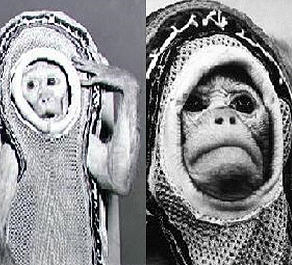 Sam 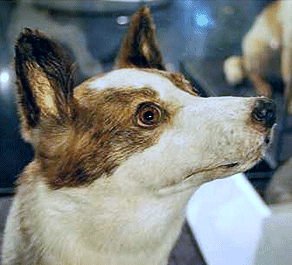 Tsygan 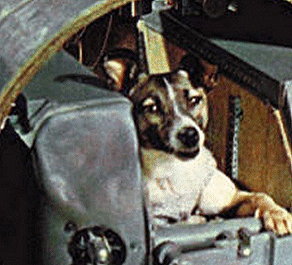 Laika 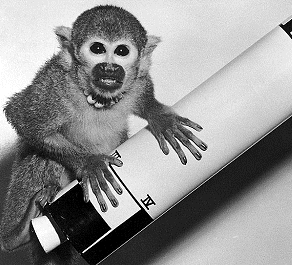 Miss Baker 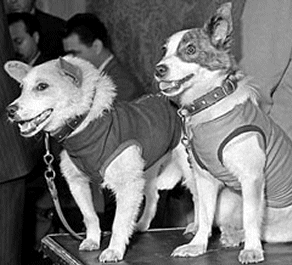 Belka and Strelka 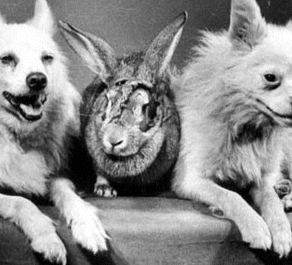 Marfusha (Little Martha) 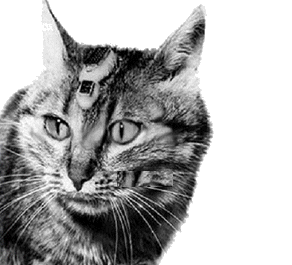 Felix 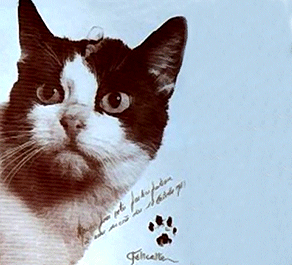 Felicette 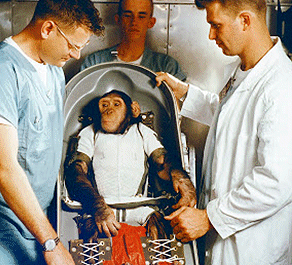 Ham |
 |
 |
 |
 |
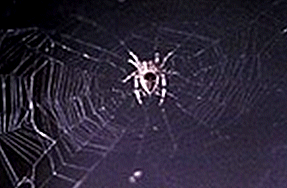 |
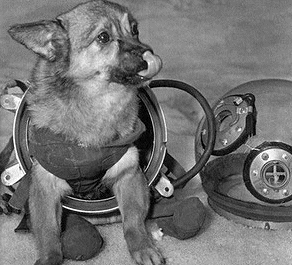 |
|
Pushinka |
Steppe Tortoises |
Veterok and Ugolyok |
Fruit Flies |
Arabella |
Malyshka |
|
|
All
Original Material Copyright SixtiesCity
Other individual owner copyrights may apply to Photographic Images |